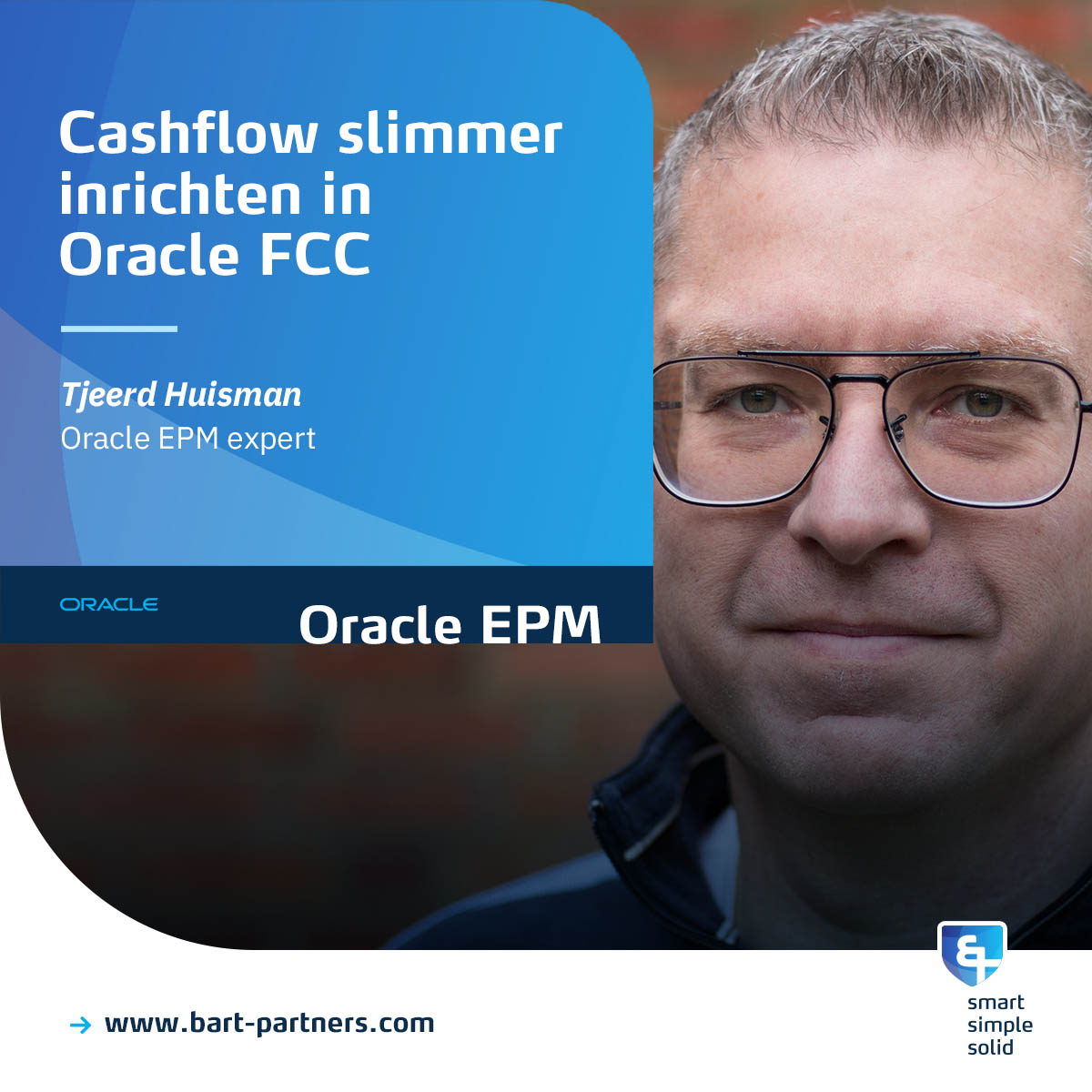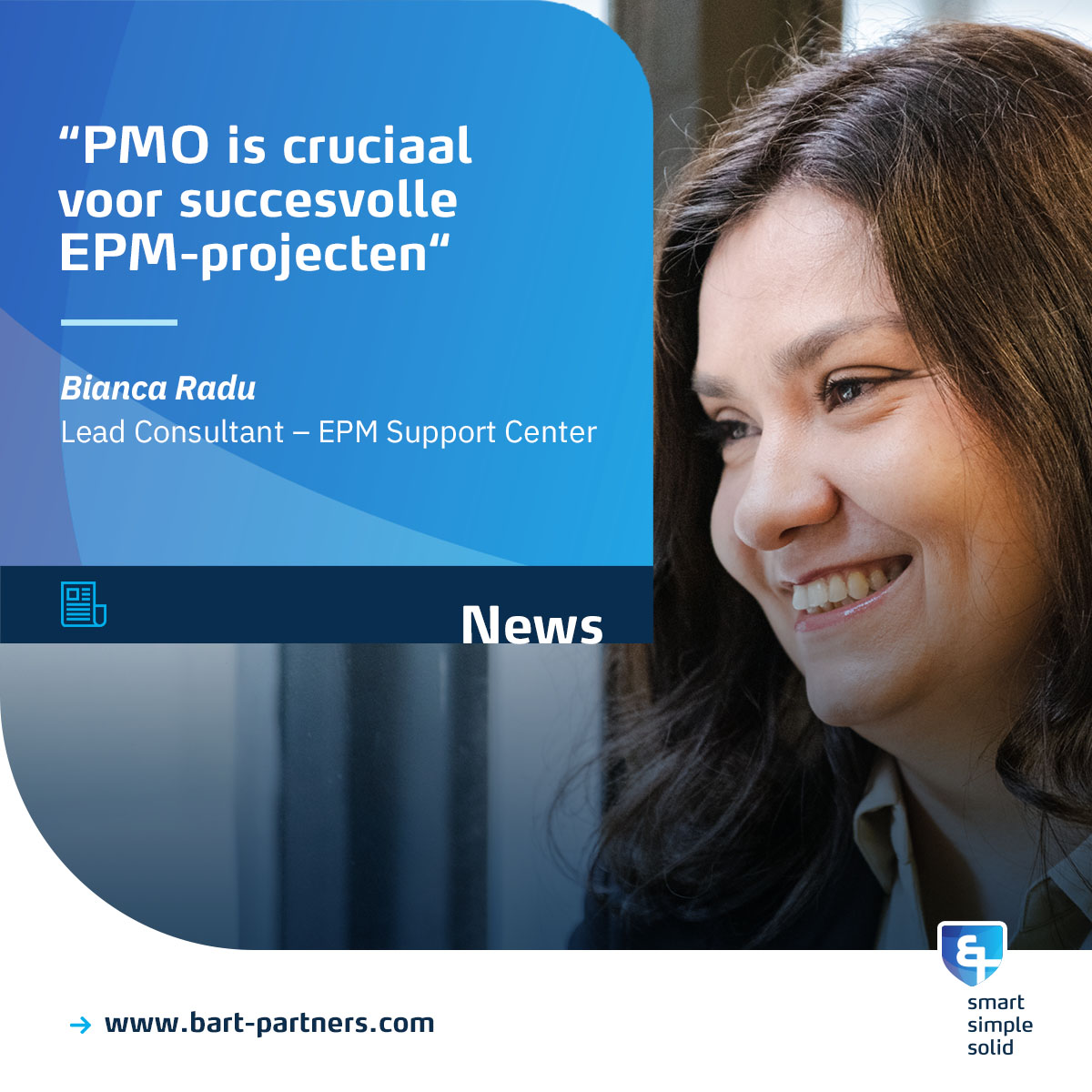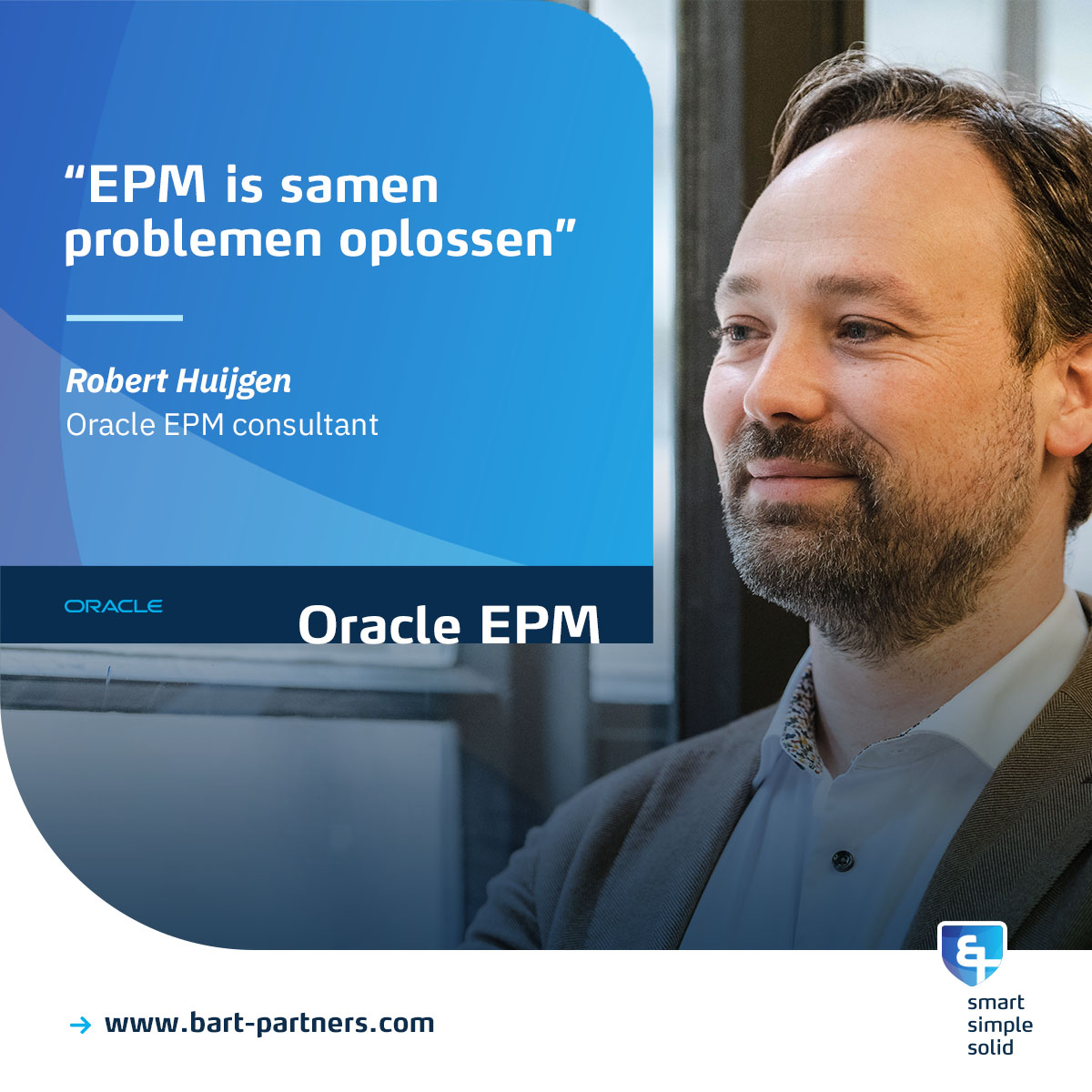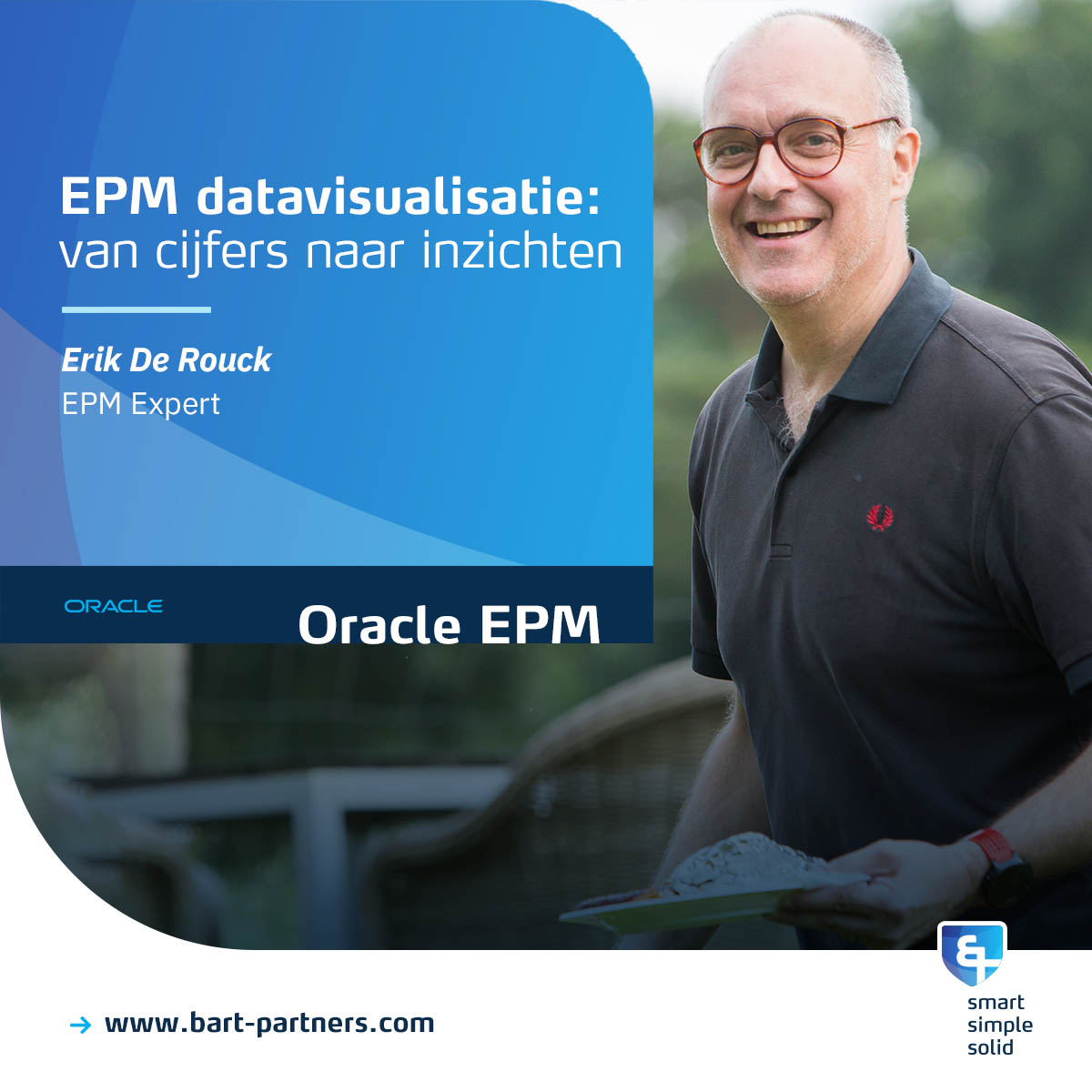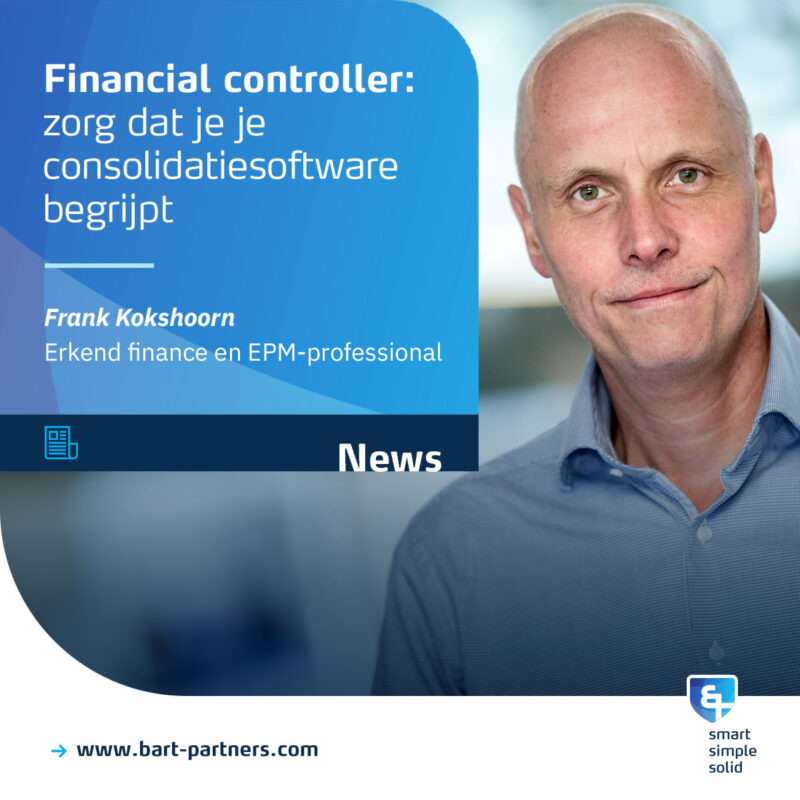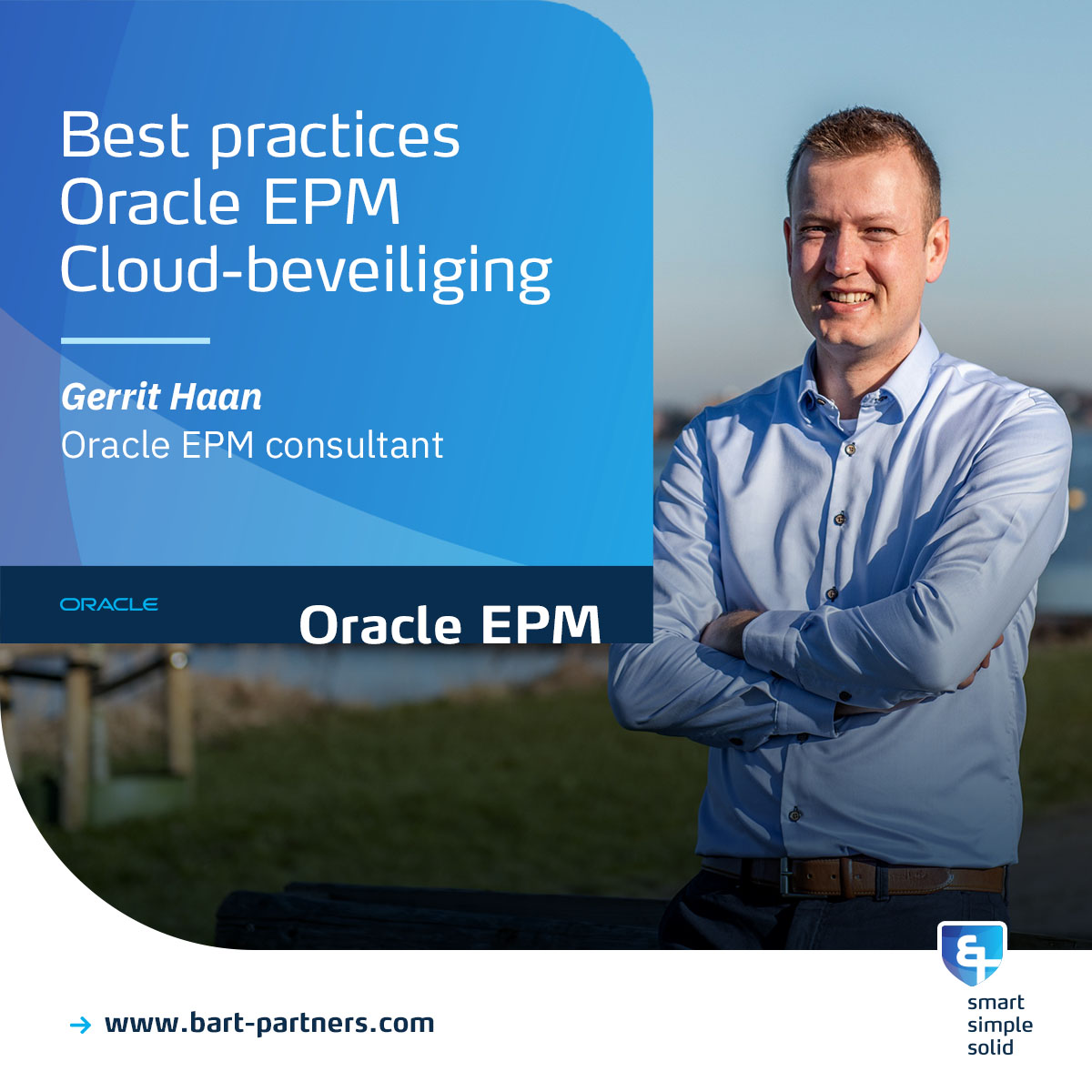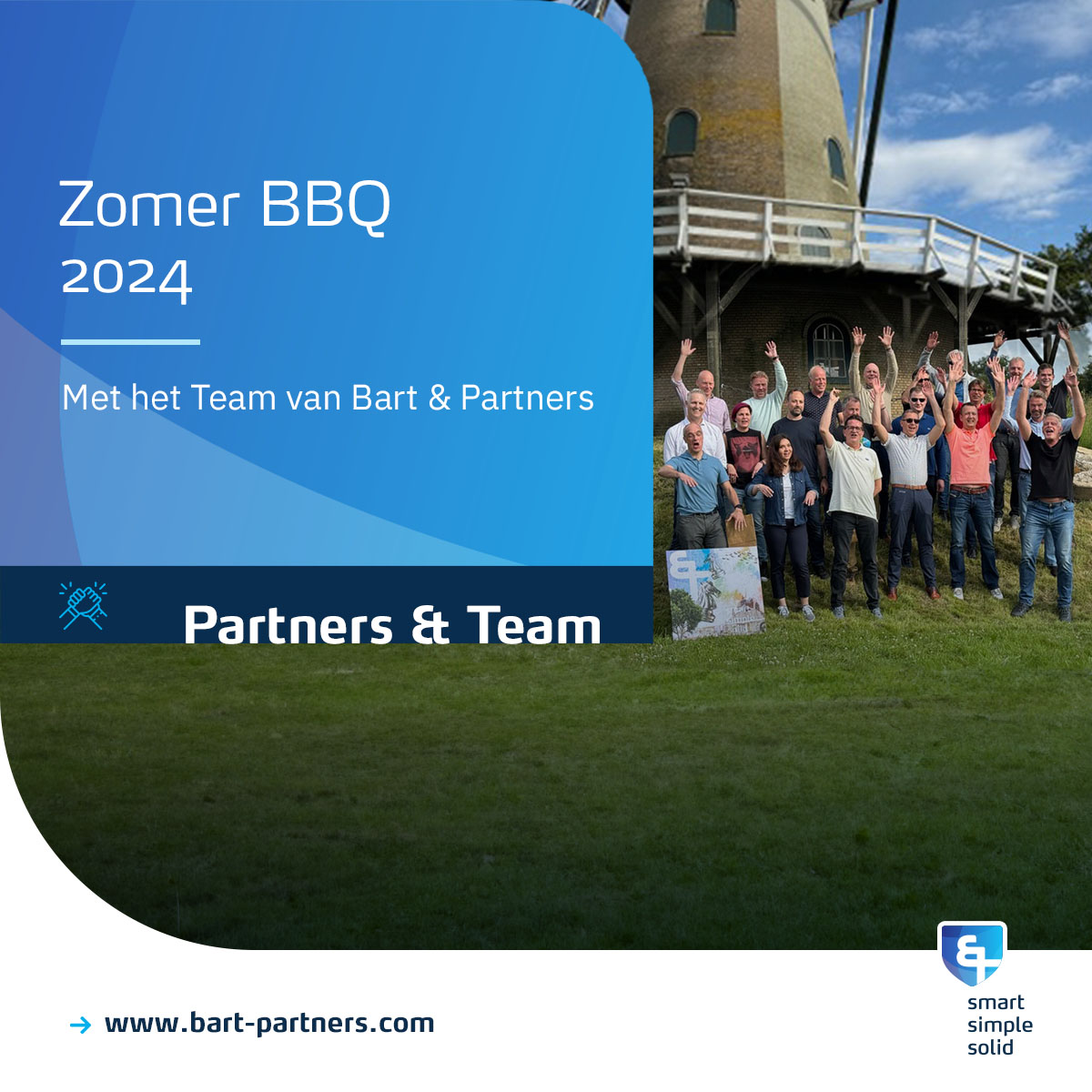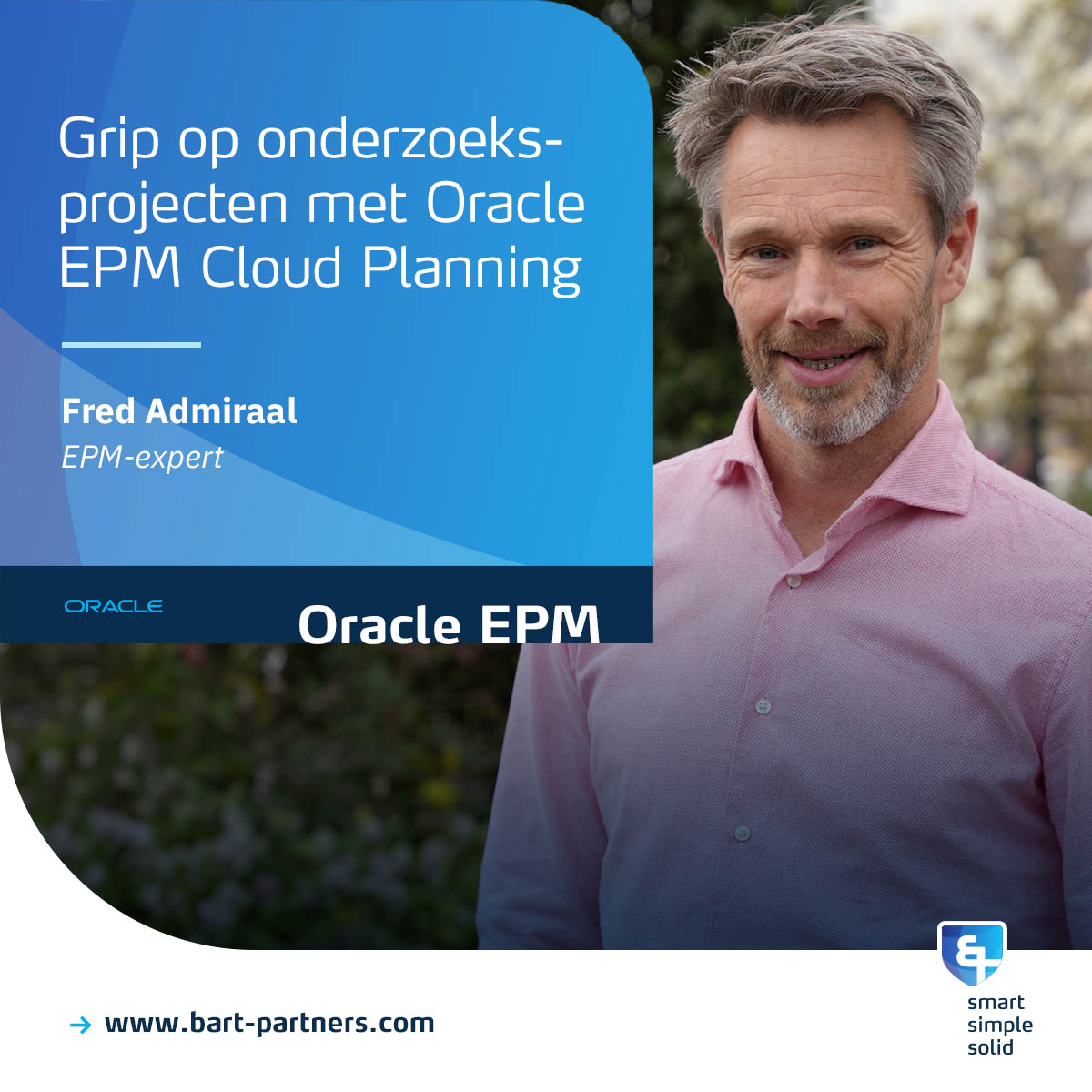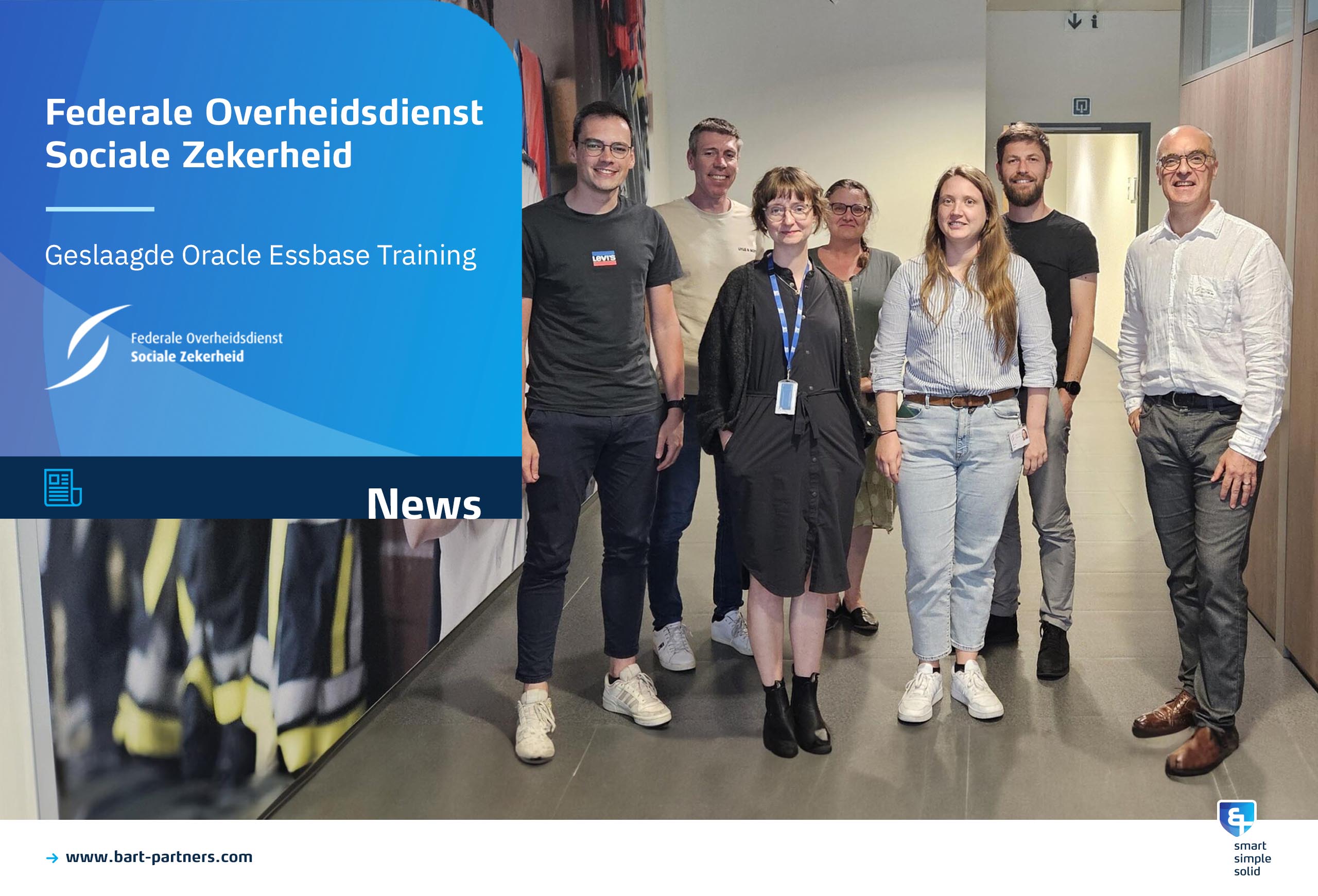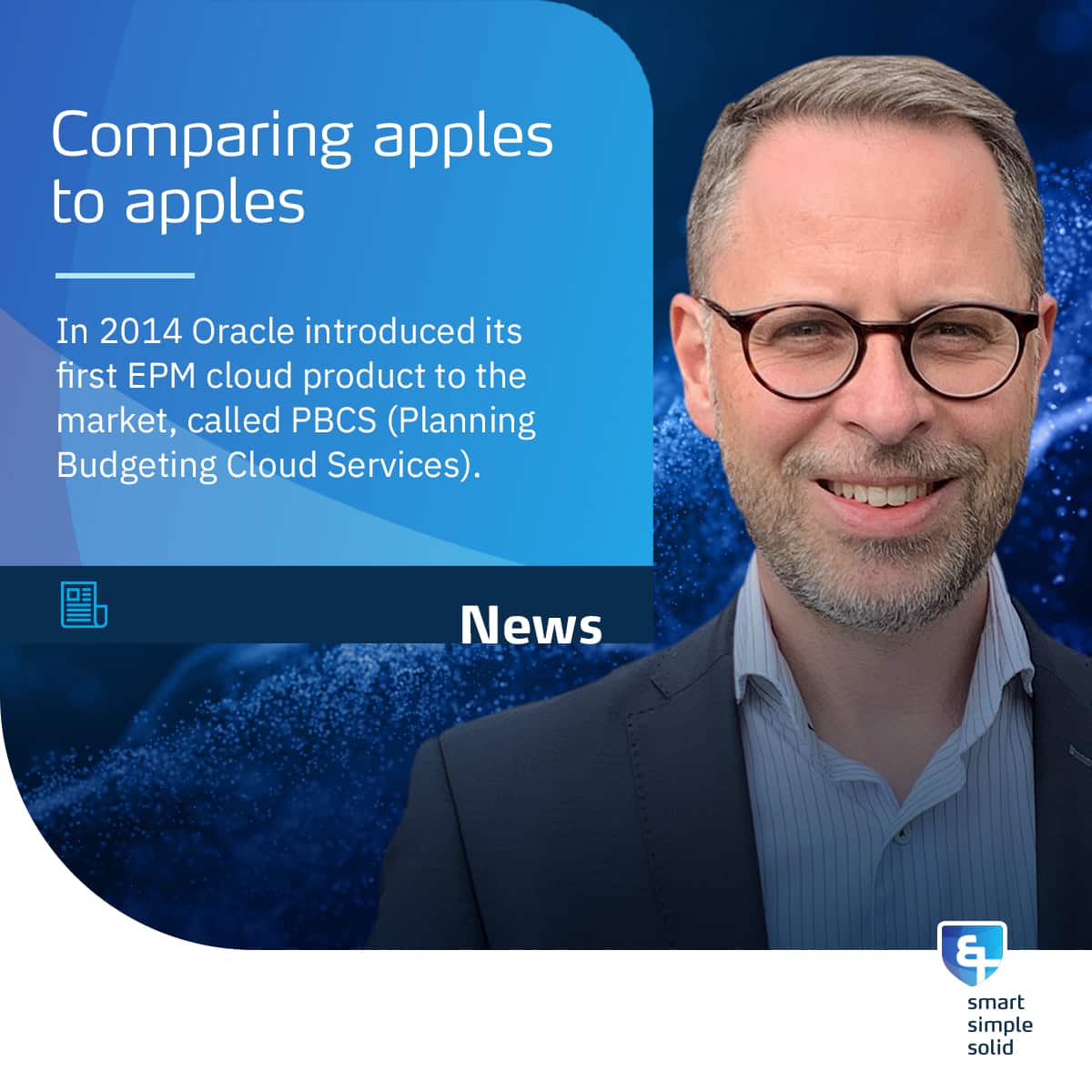
Blog: Comparing apples to apples14 Minuten geschatte leestijd
In 2014 Oracle introduced its first EPM cloud product to the market, called PBCS (Planning Budgeting Cloud Services).
After this introduction more Oracle EPM products/ solutions followed and the competition also started to offer cloud solutions. The marketing story behind these cloud solutions is that focus can shift from (partly IT) to only functional, being a finance owned solution, without any need to involve IT or even run by IT.
The truth however may not be as simple as that and offerings amongst the different vendors may vary considerably. In this article we will provide you with some pointers to have a closer look at, whilst considering moving your current “on-premise” EPM platform into the cloud.
Cloud or cloud?
Looking at the EPM vendor landscape, not all cloud offerings are the same and therefore not always comparable.
Some vendors took their on-premise installation and optimized the installation on an existing cloud-based platform (as a service), for example hosting is provided via Microsoft Azure, AWS or Google. Customers should be aware that there is a dependency with a third party that provides the cloud-based platform. Usually the contract is with the EPM vendor but sometimes costs are being charged directly to the customer based on actual (and not as predicted during the tender phase) utilization of the platform and changes to the underlying (virtual) configuration is not always controlled by the EPM vendor.
Where other EPM vendors decided to develop (from scratch) a brand new cloud-based product/ solution including the design of the underlying infrastructure. These EPM vendors typically control the full cloud solution from the underlying (virtual) hardware to the software layer and the software development itself.
Single or multi-tenant
Vendors that make use of existing cloud-based platforms sometimes provide customers with the option to choose between a single tenant or multi-tenant cloud solution.
A multi-tenant cloud solution can be seen as an office building where multiple organizations can hire office space. These organizations all share the same building and probably some generic spaces, like the restaurant, reception and general services.
Sharing the office building and some services does allow for a lower rental price of your own office space (you do not need to rent the whole building and pay for all services). However this also comes with less control (e.g., probably you have no say on the color of the outside walls and who is allowed to enter the building).
Instances per cloud offering
Another important aspect to take into account when evaluating your future EPM roadmap and thinking about moving to the cloud is the number of instances that the cloud offering provides you with. Since EPM applications are an important source of information in organizations, these applications need to have high availability and changes need to be implemented in a controlled way. Therefore changes to the application usually follow strict change management procedures, including different applications and segregation of duties. Most common is the use of a development application, a test and a production application. Where all development take place in the development application, then moved into test and after approval pushed towards production.
In the on-premise world, besides the different applications, there is in most cases also a physical split between environments. At least two separate environments (development/ test and production) is the norm. This to ensure that any software related upgrades do not impact the production environment at the same time.
Between the EPM cloud vendors the number of separate instances (environments) may well differ in their “standard” offerings. In case of a cloud offering only containing one single cloud instance, an upgrade of the EPM cloud software and third party software then impacts all applications at the same time, including the production application (without having tested the new version).
Related to the topic of the different instances per cloud and cloud updates being applied is the way updates are being applied. Do you have full control over when a software update is being brought into your solution and do you have full control over which version is being installed, or do you have to commit to a certain cloud-update policy?
Performance
Today’s trend is to have information available at short notice in order to have more time available for analyzing the data and acting in a timely manner. Performance of the EPM solution is therefore a key requirement. Not only the user experience should be fast performing (no waiting times for reports and dashboards to pop-up on screen) but also the calculation/ consolidation times should be as fast as possible.
Cloud-based EPM vendors have different approaches to the performance guarantees that they may or may not give. Performance is a difficult topic to address since multiple factors determine the most optimal performance, i.e. application design, network design and underlying (virtual) hardware design. Some EPM vendors just ‘guarantee’ best performance, where application design still needs to be accurate and optimal, whereas other EPM vendors provide different options to further scale the underlying cloud platform (and costs) when performance proves suboptimal. The latter is usually the case with EPM providers using a cloud-based platform like Microsoft Azure, AWS or Google.
At the start of an EPM implementation it may well be difficult to determine what scale of the underlying cloud platform is sufficient. This usually depends on the number of users, the amount of data and the complexity of the model and its calculations. For those EPM vendors offering multiple options for the underlying cloud-based platform, scaling-up the platform might and usually does come with additional costs.
How to access cloud-based EPM solutions?
Organizations would like to have their systems linked to their own identity providers. This way organizations have a more central and better control on who can access which applications and/ or systems. Furthermore this also allows for higher security standards, like multi-factor authentication.
All cloud-based EPM solutions have the option to integrate with different identity providers. However not all vendors allow customers to configure integration with the identity providers themselves. This means that during the implementation project the project plan should take into account this activity, which is not always a straight forward task. It usually requires multidisciplined teams to be brought together (EPM vendor cloud administration team, local IT team which administers the identity provider and the EPM (project) team).
Another element to take a closer look at is whether all users are centralized in one single identity provider or not. If not can the EPM solutions support multiple identity providers and/ or native accounts (and how should this fit into security policies)?
As a final note on how to access cloud-based EPM solutions, what interface(s) does the EPM vendor provide to allow end-users to work in the application? All EPM vendors provide end-users with an Excel add-in to have a look at their data, run reports and even sometimes input data directly from Excel. Usually an Excel add-in requires a local installation which is not always possible to be performed by the end-users themselves. Sometimes the end-users workplace is managed centrally and requires a central installation. In case of software upgrades it is rather important to investigate if installations (cloud/ clients) are backwards compatible. If not, any cloud software upgrade requires the local installation to be updated as well.
Apart from the Excel add-in, end-users would also require access to the EPM application via a (web-based) client. In case of a web-based client it makes sense to validate if the client runs within the default supported browser(s). In case of a non-web-based client (local installation) the same as for the Excel add-in applies.
Integrating with the cloud (on-premise to cloud and cloud to cloud)
One final IT topic to take into account while evaluating EPM cloud-based solution is how (data) integration is done. All EPM cloud-based solutions have possibilities to upload (meta)data into the EPM applications. From the interface this is triggered by an end-user, submitting the (meta)data file or process and uploading it into the EPM application.
When automated this process is much different. There is no button or action within the interface being triggered by an end-user, just a file or process to start in a scheduled manner.
Communication between two (cloud) systems/ solutions is nowadays handled via an API. An Application Programming Interface (API) allows two systems to communicate with each other. An API essentially provides the language and contract for how two systems should interact. To have one system communicating with another system using an API, the two systems should have so called API endpoints configured. An endpoint is one end of a communication channel. When an API interacts with another system, the touchpoints of this communication are considered endpoints. For APIs, an endpoint can include a URL of a server or service. Each endpoint is the location from which APIs can access the resources they need to carry out their functions.
It is crucial to investigate the different options EPM vendors provide to communicate with API endpoints. This is both the endpoint from the EPM cloud-based solution (what function does the API provide and how can data and/ or files be exchanged) and the end-point from the source (not EPM) system side; are there any out-of-the-box connectors available?
Together with integration with the cloud, whether it is cloud-to-cloud integration or on-premise-to-cloud integration, comes the discussion on security of the different (meta)data streams. Do firewalls have to be opened-up, are (meta)data streams protected and/ or encrypted?
Within the topic of integration from/ to the cloud there are many typical IT requirements to address. It is important to have a clear view on these topics at the very early start of a software/ vendor selection process and to incorporate these topics in the overall project plan moving forward.
Alternatives to cloud
As this article indicates despite often hearing otherwise there is still a substantial amount of IT involvement necessary when moving into the cloud, and hence a valid question would be: what alternatives are there compared to cloud-based EPM solutions?
As per today most EPM vendors are still providing their on-premise solutions and most will keep supporting them for many years still. This leads to one of the alternatives; to continue running your on-premise EPM solution by your own IT.
But what if you would like to outsource parts of the IT? In that case it is possible to (most similar to the cloud-based EPM vendors, utilizing cloud-based platforms) simply outsource your EPM solution to an external data center, including technical and sometimes even functional support. This alternative comes with similar decisions as discussed in relation to cloud solutions and has a comparable total cost of ownership but does not pressure existing customers to already take the leap into EPM cloud and engage in a major implementation project.
Conclusion
Although moving into the cloud is generally sold as a service where you no longer need to concern yourself about the IT component, it does very much make sense to have your internal IT involved from the very start of the selection process, during the implementation and after go-live.
There are many different “cloud” flavors to choose from within the EPM landscape which does not always make for an easy and accurate comparison between the offerings of different vendors regarding security, functionality, maintainability and overall running costs.
Pointers to have a closer look at, whilst selecting for the next level EPM solutions are:
- The cloud platform itself, including single or multi-tenancy
- Instances per offering
- Performance guarantees and ways/ costs to up-scale performance
- How to access the EPM cloud
- How to integrate with the EPM cloud
As mentioned, even while selecting for your next level EPM solution, there is still the option to remain with your current solution without the need to run this fully inhouse.
At Bart & Partners we take an holistic approach on evaluating different options to define your future EPM roadmap. We like to stay open-minded advising our customers during EPM selection projects and not only bring one single angle to the table (usually functionality) but all different angles that need to be considered. We are confident this approach leads to a well-informed and honest decision.
If you are currently standing at the crossroads to decide on the future of your EPM solution and would like to discuss further on how Bart & Partners can support you in this process, please send an e-mail to info@bart-partners.com and we will contact you to schedule an appointment.

